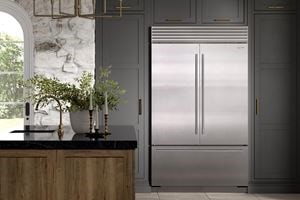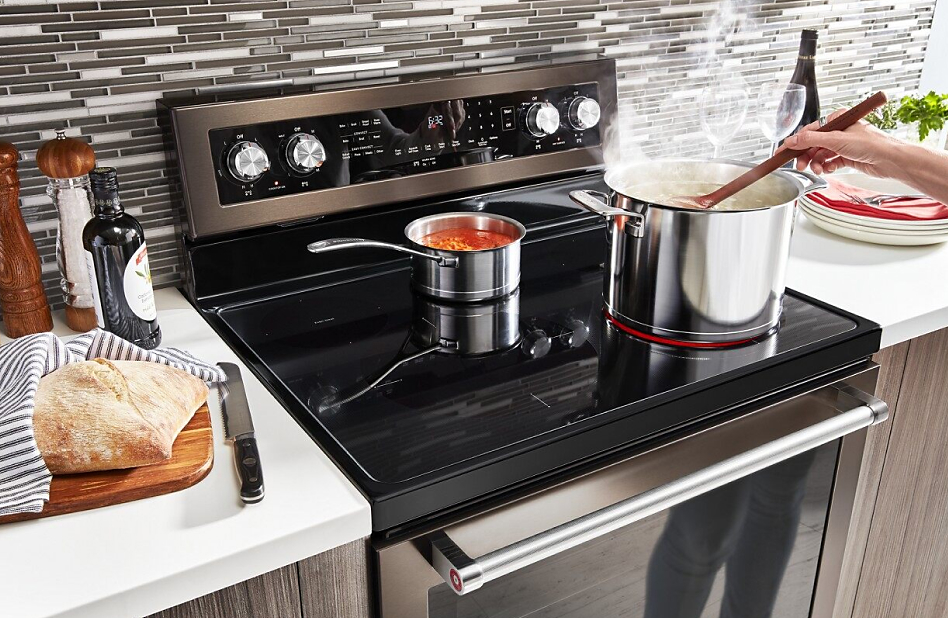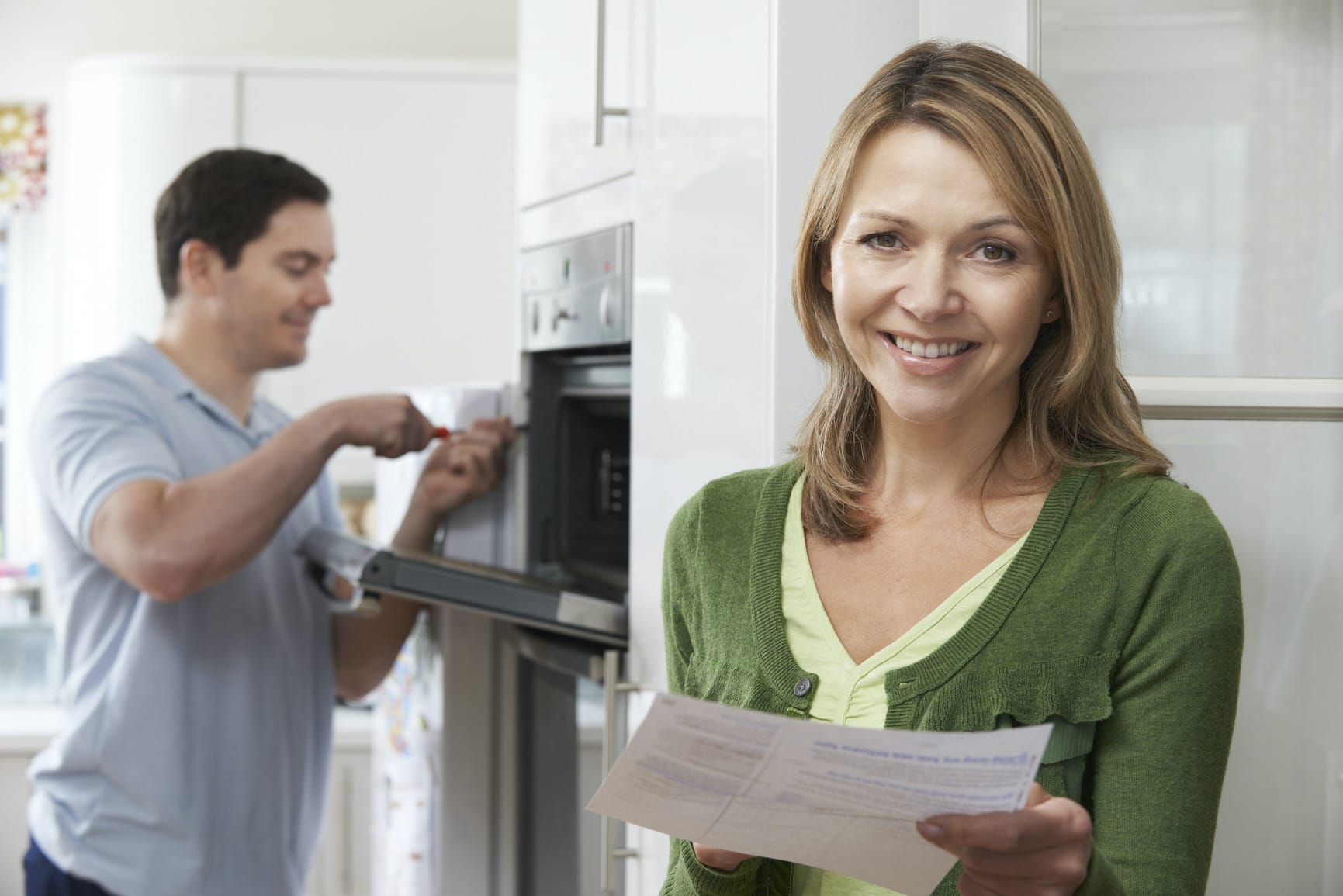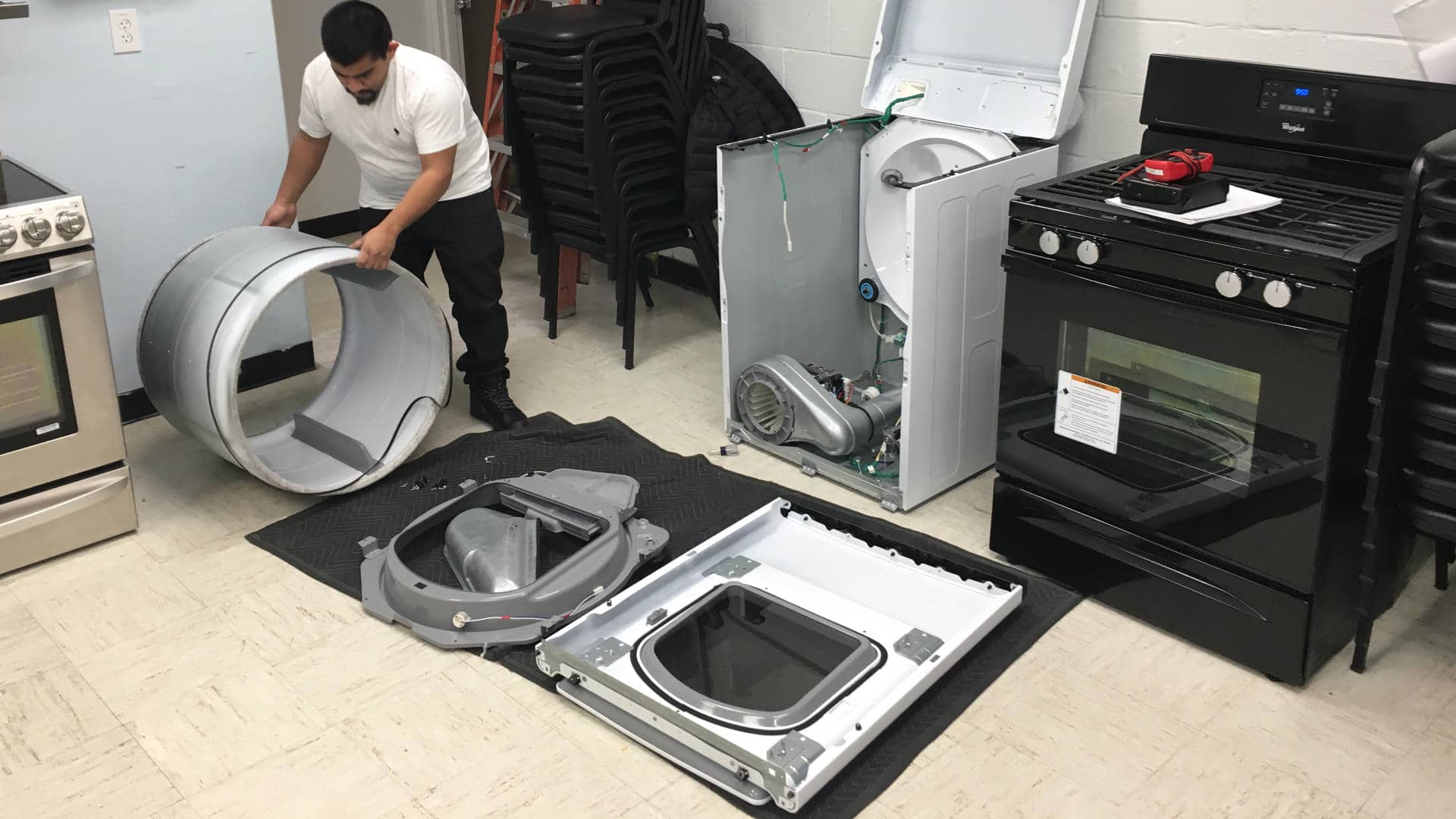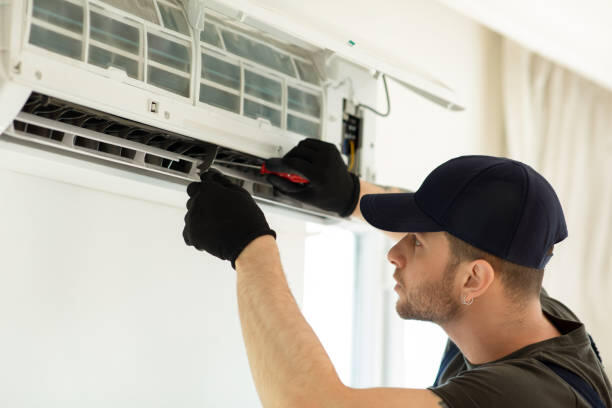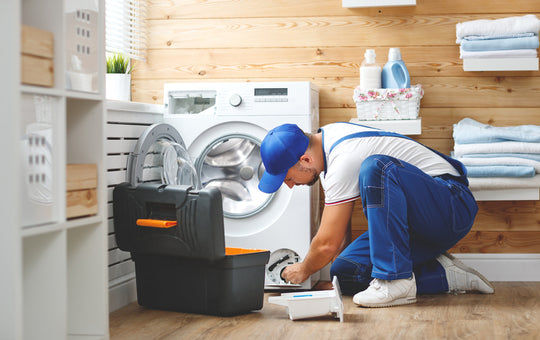Common Sub Zero Refrigerator Failures and Troubleshooting Guide
Sub Zero refrigerators are renowned for their high-quality craftsmanship and innovative technology, making them a popular choice among homeowners and chefs alike. These luxury appliances are designed to provide optimal storage conditions for food, ensuring freshness and extending shelf life. However, like any appliance, Sub Zero refrigerators are not immune to common failures that can affect their performance.
One of the standout features of these refrigerators is their dual refrigeration system. Unlike most refrigerators that have a single compressor, Sub Zero units have two separate compressors and evaporators for the refrigerator and freezer compartments. This dual system provides independent temperature control, preventing odor transfer and maintaining ideal humidity levels in each section.
Despite their advanced technology and superior construction, Sub Zero units can experience common failures that may impact their performance. Some of the most frequent issues owners encounter include temperature fluctuations, water leakage, ice maker problems, and compressor failures. These failures can arise due to various factors, such as improper maintenance, wear and tear, or electrical malfunctions.
In the following sections, we will delve deeper into these common failures, exploring their causes and potential solutions. By understanding these issues, Sub Zero refrigerator owners can take proactive measures to prevent or address them, ensuring their appliances continue to function optimally and provide the best storage conditions for their food.
Vacuum Condenser Light is On
This indicates a problem with the condenser, which is responsible for cooling the refrigerator.
When the vacuum condenser light is on, it means that the condenser is not functioning optimally, leading to poor cooling performance and potential food spoilage. To rectify this issue, there are a few troubleshooting steps you can take:
1. Check the temperature setting: Ensure that the temperature setting is not set too high or too low. Adjust it to the recommended level suitable for your specific model.
2. Inspect the door seal for damage: A damaged or worn-out door seal can cause warm air to enter the refrigerator, resulting in the condenser working harder to maintain the desired temperature. Inspect the door seal for any visible signs of damage, such as cracks or gaps. If necessary, replace the seal to ensure a proper seal.
3. Clean or replace the condenser: Over time, dust and debris can accumulate on the condenser coils, hindering its efficiency. Use a soft brush or vacuum cleaner to gently remove any dirt or dust buildup. If the condenser coils are heavily soiled or damaged, they may need to be replaced by a professional technician.
4. Clear any clogs in the defrost drain: A clogged defrost drain can cause water to accumulate in the freezer compartment, leading to ice formation and potential condenser issues. Clear any debris or ice buildup from the defrost drain using a pipe cleaner or warm water. This will help ensure proper drainage and prevent any further condenser problems.
Failure to Cool Items
When your Sub Zero refrigerator fails to cool items properly, there might be several reasons for that
1. Temperature Settings: The first thing you should check when your Sub Zero refrigerator is not cooling items effectively is the temperature settings. Ensure that the temperature is set correctly for both the refrigerator and freezer compartments.
The recommended temperature range for the refrigerator is between 37 and 40 degrees Fahrenheit (3 to 4 degrees Celsius), and for the freezer, it should be set at 0 degrees Fahrenheit (-18 degrees Celsius). Adjust the settings if necessary and monitor the cooling performance.
2. Blocked Air Vents: If the air vents inside the refrigerator or freezer are blocked, it can restrict the airflow and lead to inadequate cooling. Check for any obstructions, such as food items or ice buildup, and clear them away. Ensure that the vents are not covered or blocked by improperly stored items.
3. Dirty Condenser Coils: Over time, the condenser coils of your Sub Zero refrigerator can accumulate dust and debris, reducing their efficiency. This can result in poor cooling performance. Inspect the condenser coils, located either at the back or underneath the refrigerator, and clean them using a vacuum cleaner or a soft brush. Removing the dust and debris will help the refrigerator cool more efficiently.
4. Faulty Evaporator Fan: The evaporator fan is responsible for circulating the cold air throughout the refrigerator. If this fan is not functioning properly, it can lead to inadequate cooling. Check if the fan is running when the refrigerator is turned on. If it's not, it may need to be replaced. Consult the Sub Zero refrigerator's manual or contact a professional technician for assistance.
5. Insufficient Space Around the Refrigerator: Sub Zero refrigerators require adequate ventilation to function optimally. Ensure that there is enough space around the refrigerator for air to circulate. Avoid placing the refrigerator too close to walls or other appliances that may obstruct airflow.
Refrigerator Leaking Water
This can be a cause for concern as it can lead to water damage to the surrounding area or even damage to the refrigerator itself. In this section, we will discuss the possible causes of a leaking and provide troubleshooting steps to fix the issue.
Possible Causes:
1. Clogged or Frozen Defrost Drain: The defrost drain is responsible for draining away the water produced during the defrost cycle. If this drain becomes clogged or frozen, the water can back up and leak out of the refrigerator. This can happen if food particles or debris block the drain or if the drain line freezes due to temperature fluctuations.
2. Damaged or Misaligned Water Supply Line: Sub Zero units with built-in water dispensers or ice makers have a water supply line that connects to the household water source. If this line is damaged, loose, or misaligned, it can cause water to leak out of the refrigerator.
3. Faulty Water Inlet Valve: The water inlet valve controls the flow of water into the refrigerator. If this valve is defective, it can cause water to leak from the refrigerator.
Troubleshooting Steps:
1. Clear the Defrost Drain: Start by locating the defrost drain at the back of the refrigerator. Use a turkey baster or a small funnel to pour hot water into the drain to melt any ice or debris that may be causing the blockage. Repeat this process until the water drains freely.
2. Inspect the Water Supply Line: Check the water supply line for any signs of damage or misalignment. If you notice any issues, such as cracks or loose connections, replace or repair the line accordingly.
3. Check the Water Inlet Valve: Locate the water inlet valve, usually located at the back of the refrigerator. Inspect it for any signs of damage or leakage. If you suspect that the valve is faulty, it may need to be replaced. Consult the refrigerator's manual or contact a professional technician for assistance.
4. Clean and Inspect the Drain Pan: The drain pan collects the water that drips down from the defrost drain. Over time, this pan can become dirty or damaged, leading to leaks. Remove the pan and clean it thoroughly. Inspect it for any cracks or damage and replace it if necessary.
5. Monitor the Refrigerator: After performing the above steps, monitor your Sub Zero refrigerator for any further signs of leaking. If the issue persists, it is recommended to contact a professional technician for further assistance.
Everything Is Freezing
Excessive freezing in a refrigerator can be a frustrating issue to deal with. Not only does it affect the quality and taste of your food, but it can also lead to wasted groceries and increased energy consumption. Understanding the reasons behind this problem and implementing some helpful tips can help address the issue effectively.
Causes of Excessive Freezing:
1. Temperature Setting: One of the most common causes of everything freezing in a refrigerator is a temperature setting that is too low. Check the thermostat or temperature control dial and ensure it is set to the recommended temperature. Typically, the ideal temperature range for refrigerators is between 37-40 degrees Fahrenheit (2-4 degrees Celsius).
2. Blocked Air Vents: Another possible cause of excessive freezing is blocked air vents. When the vents inside the refrigerator are obstructed, cold air cannot circulate properly, resulting in uneven cooling and freezing of items closest to the vents. Make sure that the vents are not blocked by food items or other objects.
3. Faulty Thermostat: A malfunctioning thermostat can cause the refrigerator to continuously run and not cycle off when it reaches the desired temperature. This can lead to excessive cooling and freezing of items. If you suspect a faulty thermostat, it is best to consult a professional technician for repairs or replacement.
4. Damaged Door Seal: A worn or damaged door seal can allow cold air to escape from the refrigerator, causing the unit to work harder to maintain the desired temperature. This can result in excessive cooling and freezing. Inspect the door seal for any signs of damage, such as cracks, tears, or gaps. If necessary, replace the door seal to ensure a tight seal.
Tips to Address Excessive Freezing:
1. Adjust Temperature Settings: Begin by adjusting the temperature settings to the recommended range mentioned earlier. Monitor the refrigerator for a few days to see if the freezing issue persists. If necessary, make further adjustments until the desired temperature is achieved.
2. Rearrange Food Items: Rearranging the placement of food items inside the refrigerator can help promote better airflow and prevent items from freezing. Avoid placing items directly in front of or blocking the air vents. Distribute items evenly throughout the refrigerator to ensure consistent cooling.
3. Check and Clean Vents: Regularly check the vents inside the refrigerator and ensure they are not obstructed by food or other objects. If you notice any blockages, clear them to allow proper airflow and cooling.
4. Inspect and Replace the Door Seal: If the door seal is damaged, replace it promptly to ensure a tight seal. This will prevent cold air from escaping and help maintain a more stable temperature inside the refrigerator.
Sub Zero Refrigerator Temperature Fluctuates
There are instances when the temperature inside the refrigerator may fluctuate, causing concerns for food safety and longevity.
Possible Causes of Temperature Fluctuations:
1. Overloading: If the refrigerator is overloaded with food items, it can restrict proper airflow and lead to temperature fluctuations. The excess heat generated by the items can also affect the cooling system's efficiency.
2. Door Seal Issues: A faulty or damaged door seal can allow warm air to enter the refrigerator, causing temperature fluctuations. This can occur if the door is not fully closed or if the seal is worn out.
3. Condenser Coils: Dust and debris can accumulate on the condenser coils, hindering their ability to dissipate heat efficiently. This can lead to temperature fluctuations as the cooling system struggles to maintain the desired temperature.
4. Evaporator Fan Motor: If the evaporator fan motor is malfunctioning or not running at its optimal speed, it can disrupt the airflow within the refrigerator, resulting in temperature fluctuations.
Troubleshooting Techniques to Stabilize the Temperature:
1. Proper Organization: Ensure that the refrigerator is not overloaded with food items. Allow for sufficient space between items to promote proper airflow.
2. Check the Door Seal: Inspect the door seal for any signs of damage or wear. Replace it if necessary to ensure a tight seal and prevent warm air from entering the refrigerator.
3. Clean the Condenser Coils: Regularly clean the condenser coils to remove dust and debris. Refer to the user manual for the location of the coils and follow the manufacturer's instructions for cleaning.
4. Test the Evaporator Fan Motor: If you suspect an issue with the evaporator fan motor, you can perform a visual inspection to ensure it is running smoothly. If it is not functioning properly, it may need to be repaired or replaced by a professional technician.
5. Temperature Calibration: Some Sub Zero refrigerators allow for temperature calibration. Refer to the user manual to determine if this feature is available and adjust the settings accordingly to stabilize the temperature.
Sub Zero Refrigerator Won't Turn On
A Sub Zero refrigerating unit not turning on can be due to several reasons. Here are some of them and how to fix them.
1. Power Supply Issues: The first thing to check when your refrigerator won't turn on is the power supply. Ensure that the unit is properly plugged into a functioning power outlet. If it is, try unplugging and plugging it back in to eliminate any temporary electrical glitches. Consider testing the outlet with another device to ensure it is supplying power.
2. Tripped Circuit Breaker: If the power supply is not the issue, check the circuit breaker panel to see if the breaker for the refrigerator has tripped. If it has, reset the breaker by turning it off and then back on. It is worth noting that a tripped breaker could be a sign of an electrical problem, so if the issue persists, it may be best to consult a professional electrician.
3. Faulty Power Cord or Outlet: Inspect the power cord for any visible signs of damage, such as fraying or cuts. If the cord appears damaged, it should be replaced by a professional to prevent any electrical hazards. Similarly, if the power outlet where the refrigerator is plugged into is faulty, it may need to be replaced or repaired.
4. Control Panel Malfunction: Sometimes, the control panel on the refrigerator may malfunction, preventing it from turning on. Check if the display lights up or responds to any input. If the control panel is unresponsive or displaying error codes, consult the manufacturer's manual for troubleshooting steps. In some cases, a professional technician may need to be called to repair or replace the control panel.
5. Internal Component Issues: If none of the above steps resolve the issue, there may be internal component problems causing the refrigerator not to turn on. In this case, it is best to contact Sub Zero's customer support or a certified technician to diagnose and repair the problem. They have the knowledge and tools to identify any faulty components and perform the necessary repairs.
Sub Zero Fridge Isn't Getting Cold
Sub Zero refrigerators are known for their exceptional cooling capabilities. However, there may be instances where you notice that your fridge is not getting cold enough to keep your food fresh.
1. Check the temperature settings: The first thing you should do is ensure that the temperature settings on your fridge are properly adjusted. Make sure that the temperature dial is set to the recommended temperature for the refrigerator compartment. It is usually around 37-40 degrees Fahrenheit (2-4 degrees Celsius). If the temperature setting is too high, adjust it accordingly and give the fridge some time to reach the desired temperature.
2. Clean the condenser coils: Over time, the condenser coils in your Sub Zero fridge can become dirty and clogged with dust and debris. This can hinder the cooling efficiency of the refrigerator. To clean the condenser coils, locate them either at the back or underneath the fridge. Use a brush or vacuum cleaner to remove any dirt or dust buildup. Regularly cleaning the condenser coils can help improve the cooling performance of your fridge.
3. Check the door seal: A faulty or damaged door seal can cause warm air to enter the refrigerator, preventing it from getting cold. Inspect the door seal for any signs of wear, tears, or gaps. If you notice any issues, replace the door seal to ensure a tight and proper seal.
4. Verify proper ventilation: Sub Zero refrigerators require proper ventilation to function optimally. Make sure that there is enough space around the fridge for air to circulate freely. Avoid placing the fridge in a tight or enclosed space, as this can restrict airflow and impact cooling performance.
5. Avoid overloading the fridge: Overloading the refrigerator with too many items can obstruct airflow and prevent proper cooling. Ensure that there is enough space between items for air to circulate. Consider rearranging the contents of the fridge to allow for better airflow.
6. Check the defrost system: If the defrost system in your Sub Zero fridge is not functioning correctly, it can lead to inadequate cooling. Check if the defrost timer, defrost heater, or defrost thermostat are working properly. If any of these components are faulty, they may need to be replaced by a professional technician.
Remember, it's essential to address inadequate cooling in your Sub Zero fridge promptly to prevent food spoilage and maintain the freshness of your groceries.
Conclusion
In this comprehensive guide, we have explored the common failures that can occur with Sub Zero refrigerators and provided troubleshooting methods to address these issues.
It is important to note that while some issues can be resolved through basic troubleshooting steps, there are instances where professional repair may be necessary. Sub Zero refrigerators are complex appliances, and attempting to fix certain problems without the proper knowledge and expertise can lead to further damage.
When encountering issues that cannot be easily resolved through troubleshooting, it is recommended to seek the assistance of a qualified technician. These professionals have the experience and tools necessary to accurately diagnose and repair the specific problem with your Sub Zero refrigerator.
